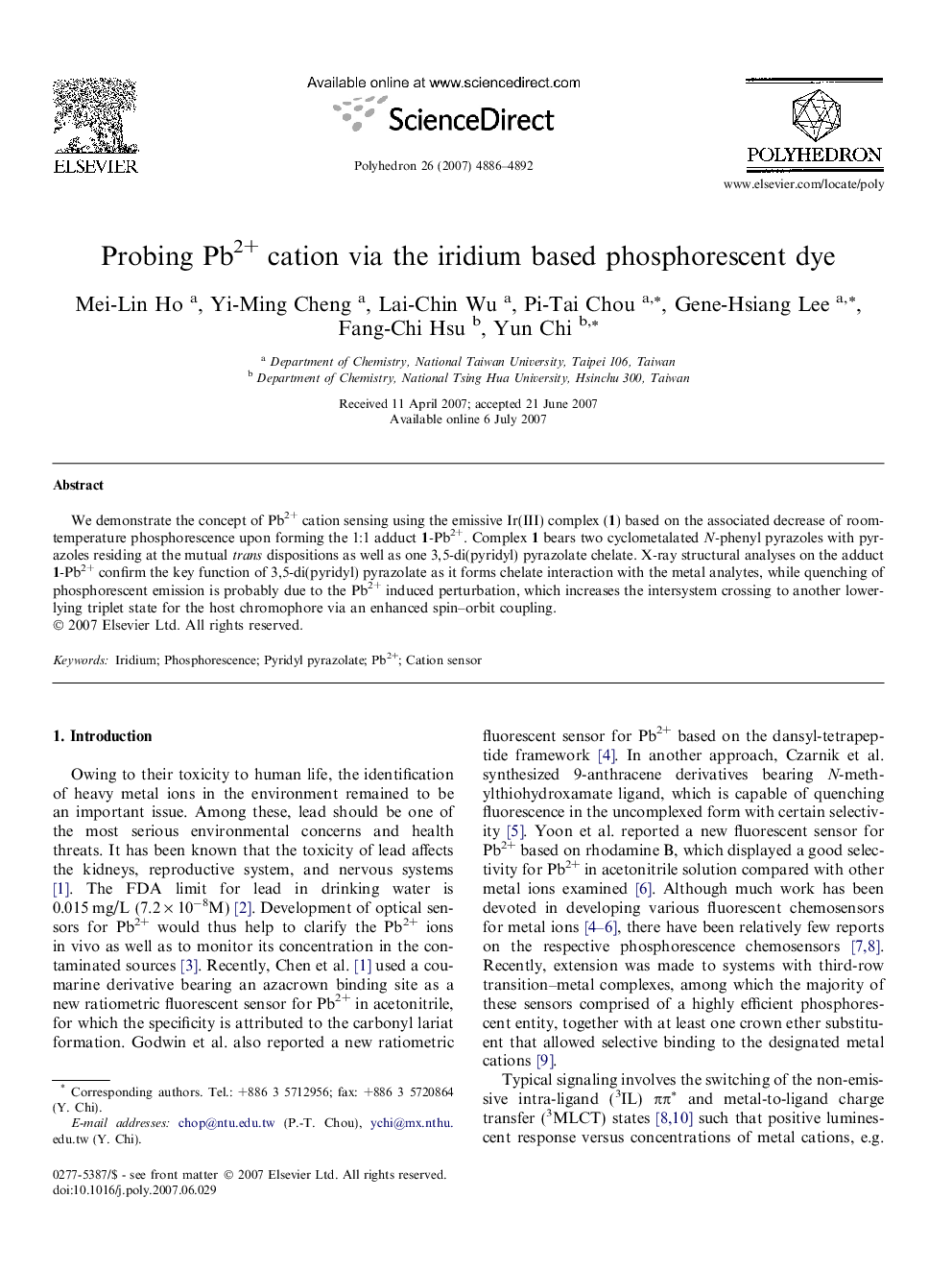| Article ID | Journal | Published Year | Pages | File Type |
|---|---|---|---|---|
| 1338009 | Polyhedron | 2007 | 7 Pages |
We demonstrate the concept of Pb2+ cation sensing using the emissive Ir(III) complex (1) based on the associated decrease of room-temperature phosphorescence upon forming the 1:1 adduct 1-Pb2+. Complex 1 bears two cyclometalated N-phenyl pyrazoles with pyrazoles residing at the mutual trans dispositions as well as one 3,5-di(pyridyl) pyrazolate chelate. X-ray structural analyses on the adduct 1-Pb2+ confirm the key function of 3,5-di(pyridyl) pyrazolate as it forms chelate interaction with the metal analytes, while quenching of phosphorescent emission is probably due to the Pb2+ induced perturbation, which increases the intersystem crossing to another lower-lying triplet state for the host chromophore via an enhanced spin–orbit coupling.
Graphical abstractThe emission of 1 (2 × 10−5 M in acetonitrile, left) and 1 in the presence of 4 × 10−6 M solution of Pb2+ excited at 365 nm (UV lamp).Figure optionsDownload full-size imageDownload as PowerPoint slide
